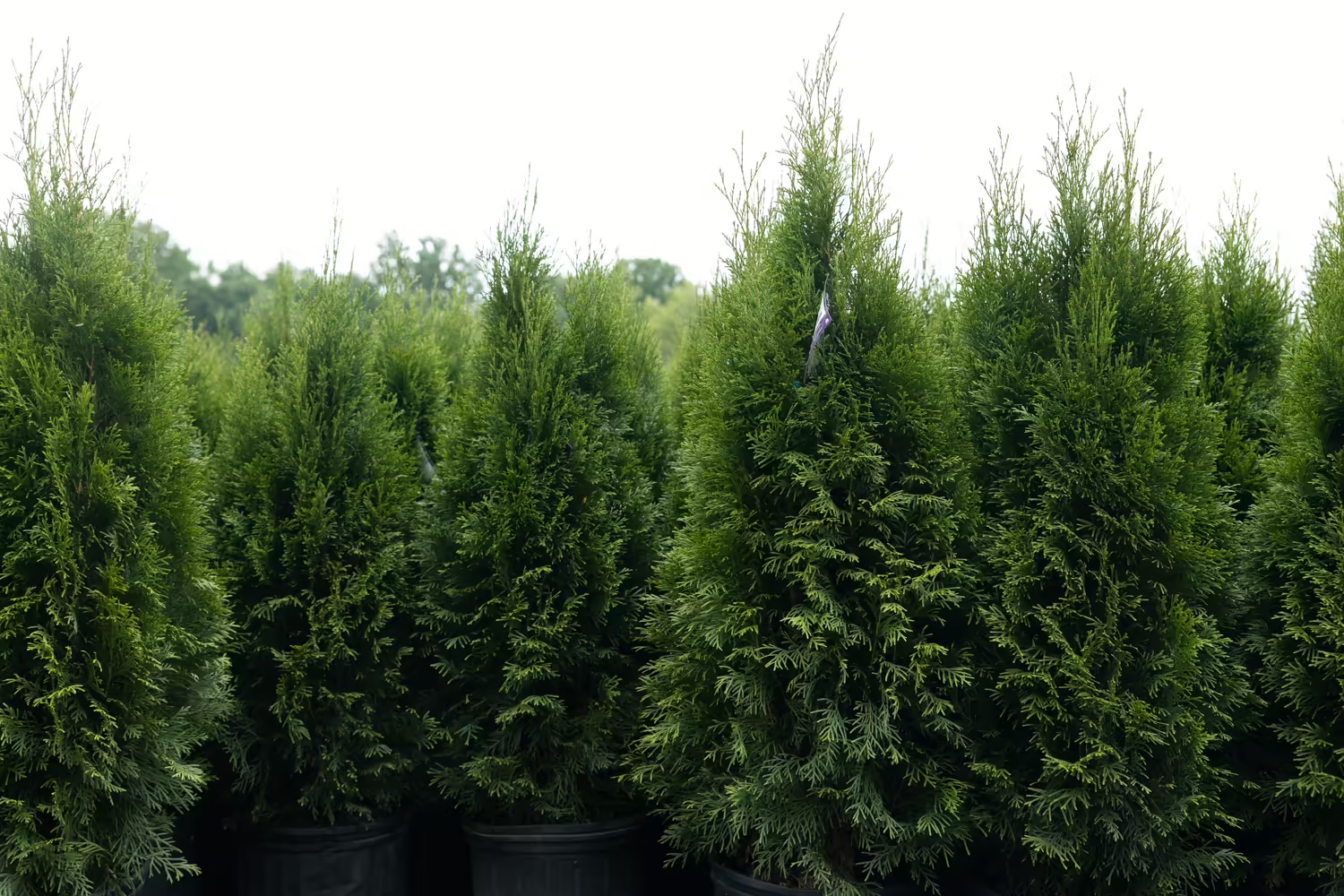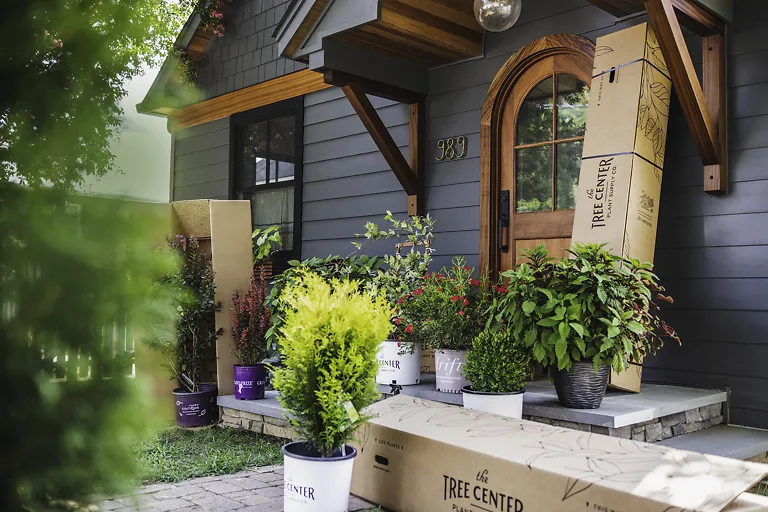
Written by s • Choosing Screening Trees and Shrubs
Most of us want privacy in our gardens, so we can relax and enjoy ourselves, free from the noise and dust of a highway, the curiosity of passersby, or the scrutiny of neighbors. Plus, like a work of art, a garden looks best when surrounded by a frame – and that’s where green screening comes in. Let’s consider the options, and think about some of the issues. We will do a later blog on different plant choices.
Better Than a Fence?
There are lots of reasons why a green screen is better than a fence – in fact, the only benefit of a fence is that its ready when you put it up – after that it’s downhill all the way. Fences begin to deteriorate the day after they go up. They need maintenance to keep them from rotting or rusting, and cheaper fencing is the worst of all. So many people come to us to hide an ugly old fence, so why not skip that part and start from the beginning with a green screen? Chances are you will end up there anyway. The only good thing about a fence is instant security, and if you need that it’s wise to put up a cheap fence and then plant against it so the fencing disappears.
Why is a Green Screen so Much Better?
- Filters and blocks noise and dust better
- Slows down winds and reduces snow drift
- Can be much taller than a fence, if needed
- Improves with age, and needs less attention than hedges
- Visually attractive
- Refuge for birds and wildlife
- Improves urban environments and greens our cities
- Traps CO2 and makes a contribution to reducing global warming
Should I Plant a Hedge or a Screen?
Hedges need trimming, but screens take care of themselves. A hedge is a good choice is you want a neat garden, or you don’t have a lot of space – a hedge can be 20 feet tall and just 3 feet wide, that’s impossible with a screen. But hedges need regular trimming, at least once a year, so do you have the time and interest to do that, or the budget to hire someone?
Screening is much less work, since it uses the natural dimensions of the plants. You need to choose wisely, and not plant something that will become way too big, just because it grows fast. While attractive screening will add to the resale potential and value of your home, giant overgrown bushes look like a liability and will work against you. Consider the maximum size of your choices carefully and allow room for them to grow.
Is a Mixture of Plants Better than Just One Type?
Hedges are usually made of just one type of plant – we usually want a solid wall that looks all the same. But you can also have a ‘tapestry hedge’ made up of different plant, often with different foliage colors, or other creative choices, that can look amazing and turn a bland hedge into a bold garden feature.
With screens it makes sense to mix things up, and plant in clusters, instead of the even spacing you need for a good hedge. As well, untrimmed plants, especially when planted close together, become more tree-like, and you could lose screening in the lower parts – often where you want it most. Planting smaller shrubs in front of taller plants will prevent that, and make a much more interesting screen as well. Of course, that kind of planting needs more room, so do some measuring first to make sure it will work out OK.
Usually, hedges make sense for a smaller property, while screening is best for larger garden spaces. A smaller place just doesn’t have the width available to accommodate a screen that is more than a few feet tall.
How Tall Do I Need?
Lots of people plant bushes and trees that are way to tall for their property. If you want privacy it doesn’t take more than 8 feet to give you that, unless you are overlooked by high windows – and screening that is often not practical anyway, as you need considerable height. Especially on a small property, tall plants look out of place, and will overhang your home and cause problems with neighbors. Often it is the look of a barrier you need, not a tall, solid screen at all, and you can get that with plants that are just 3 or 4 feet tall.
Does it Need to be a Continuous Screen?
The natural instinct is to plant a continuous green wall when you feel you need screening, but that isn’t necessarily what you need. Maybe it is only privacy from certain spots or for certain windows in your house? Perhaps a cluster of upright evergreens planted in the right spot is all you need? Big hedges and screen can make your garden feel smaller than it is, and throw a lot of shade, especially in winter. Even a shade tree on the lawn will give valuable summer privacy, so don’t automatically jump to planting a big evergreen hedge.
Evergreen or Deciduous?
Often we plant evergreens for hedges and screens, and that makes sense if you want year-round screening. Don’t ignore deciduous trees and shrubs, though – after all, how much time do you spend in your garden in winter? A deciduous hedge in winter will still slow down the wind, filter snow and even reduce noise, and give some privacy too. It has the advantage of letting more light in during the dark days of winter, and you can also have a flowering hedge if you use a deciduous shrub like a lilac, or make a hedge of cherry or apple trees.
How Long Will it Take?
This is always the million-dollar question, and of course it depends on what you plant. It is the attraction of a quick result that draws people to plant bushes that will be nice in five years, but monsters in ten more. Don’t make that mistake. Avoid obviously slow-growing plants like boxwood or American holly if you want more than a 3-foot screen, but apart from that, good soil preparation and regular care is worth more than choosing some ‘fast-growing tree’. Since even moderate growers can add a foot or two a year, if you start with 4-foot plants you should have a 10 foot hedge in 3 to 5 years.
To get the maximum growth from any plant, dig large holes or a continuous trench and mix lots of richer organic materials, like compost or rotted manures, into the soil – organic material is king in the garden. Use fertilizers during the early years as frequently as the directions allow. Chemical formulations for evergreen hedges (even if you are planting deciduous) will give plenty of nitrogen, the nutrient that brings lots of length to stems, but use a high-phosphorus fertilizer in the planting soil. Organic fertilizers will give good results, but usually won’t deliver the same rate of growth. Switch to them once you have achieved the height you need.
What Mistakes Might I Make?
A common mistake is to plant too close, thinking that will give a quicker screen. It won’t. Instead it will cause lots of top growth but very little on the sides or low down, as the plants fight for the light. Taller hedges and screens need at least 3 feet spacing, and for informal screening that can be 5 or 8 feet, and sometimes even more. You want sturdy plants with branches to the ground, not spindly sticks with branches high up.
A related mistake for hedges is to wait until it reaches the wished-for height before beginning to trim. To make a dense hedge, green to the ground, you need to trim just a little from almost as soon as you plant. Just an inch or two taken off frequently will develop really dense structure that will resist damage, stay green at ground level and look terrific.
Stay Tuned. . .
Check out the next blog to see some interesting choices of plants to use for hedges and screens.






